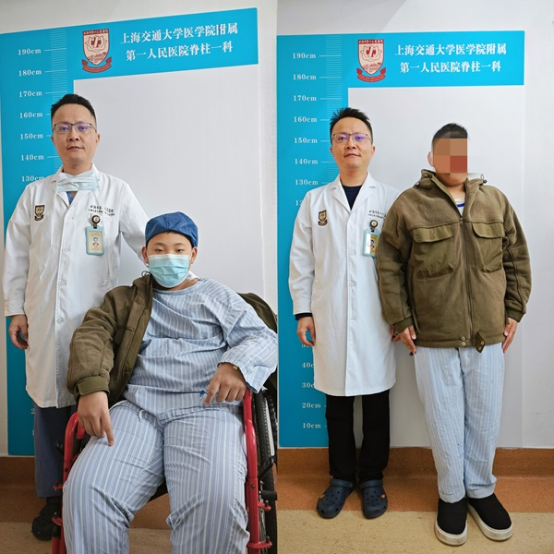- News
Precise Positioning With Mazor X Orthopedic Robots, the Spinal Surgery Team of Shanghai General Hospital Restart a Teenager’s "Upright Life"
https://wap.xinmin.cn/content/32606216.html

Recently, the Spinal surgery team of the Orthopedics Clinical Medical Center of Shanghai General Hospital (SGH) took the lead in completing a new generation Mazor X spinal surgery robot assisted congenital spinal deformity osteotomy correction surgery, allowing a 12-year-old child with congenital scoliosis and severe kyphosis to straighten their spine and return to normal life.
Jian Jian (pseudonym), who is 12 years old this year, had a sudden sensation of weakness in both lower limbs and walking difficulty a month ago. The local hospital diagnosed it as a congenital spinal deformity and recommended surgical treatment. After traveling to multiple hospitals, his parents brought him to the Spinal Surgery Department of the Orthopedics Center of Shanghai General Hospital for treatment.
Dr. Ma Jun, Deputy Chief Physician of the Spine Department of SGH, received Jianjian and arranged for him to be admitted to complete relevant examinations on the same day. The X-ray examination of the entire spine indicates that Jianjian is a 10 'hemivertebral deformity, with a posterior convexity Cobb angle of 91 ° and a lateral curvature Cobb angle of 66 °. In addition, the thoracic spinal cord in the posterior convexity segment is compressed and becomes thinner, accompanied by obvious signal abnormalities, indicating serious damage to spinal cord function. This is also the reason for Jianjian's difficulty in walking, and surgical treatment is urgently needed.
Unlike other types of scoliosis such as idiopathic and degenerative scoliosis, congenital scoliosis is a three-dimensional deformity of the spine caused by congenital developmental abnormalities in the vertebral segments. The degree of deformity is often more complex, and higher precision is required for nail placement and osteotomy correction operations during surgery.
The expert team conducted thorough preoperative planning and discussion, and fully communicated with Jianjian's parents. It was decided to use the new generation Mazor X spinal surgery robot for Jianjian's orthopedic surgery. This robot can achieve precise placement of pedicle screws, visualize the entire surgical process, and synchronously plan the range of osteotomy, improving the accuracy and safety of surgery.
On the surgery day, with the cooperation of the Director of Anesthesiology, Prof. Li Jinbao, and the Anesthesiology Nursing Team, as well as the consultation and guidance of Professor Zhou Xuhui, Director of the Clinical Transformation Research Institute Orthopedic Disease Transformation Center, Vice Chief Physician Ma Jun and attending physician Ren Yilong of the Spinal Surgery Department completed the screw signal and placement position of each surgical segment on the severely deformed spinal structure using the Mazor X robot AI software according to the preoperative planning plan Design of important parameters such as nail angle. The surgical team obtains X-ray images of the child's spine through the C-arm fluoroscopy system. After matching the preoperative CT and intraoperative X-ray images, the spinal surgical robot sends operation instructions to the robotic arm, which automatically selects the nail placement point and direction. Subsequently, the surgical team visualized the operation using a screw guide sleeve on the robotic arm, and inserted 12 pedicle screws into chest 8-chest 10, chest 11-waist 1. Referring to the preoperative simulated range of osteotomy, they completed high difficulty posterior total spinal osteotomy and corrective surgery for scoliosis and kyphosis, with a deformity correction rate of 85%. Neuroelectrophysiological monitoring throughout the surgery showed no abnormalities. One week after surgery, Jianjian got out of bed under the protection of braces for functional exercise, and the symptoms of lower limb fatigue improved significantly. At present, the patient has recovered well and has been discharged from the hospital.
It is reported that many parents in clinical practice believe that scoliosis is simply due to a child's young age or poor development, and will naturally improve as they grow up. This erroneous mindset often misses children’s best treatment opportunity. If the lateral curvature is severe to a certain extent (angle>40 °), timely surgical correction should be performed according to the actual situation.
